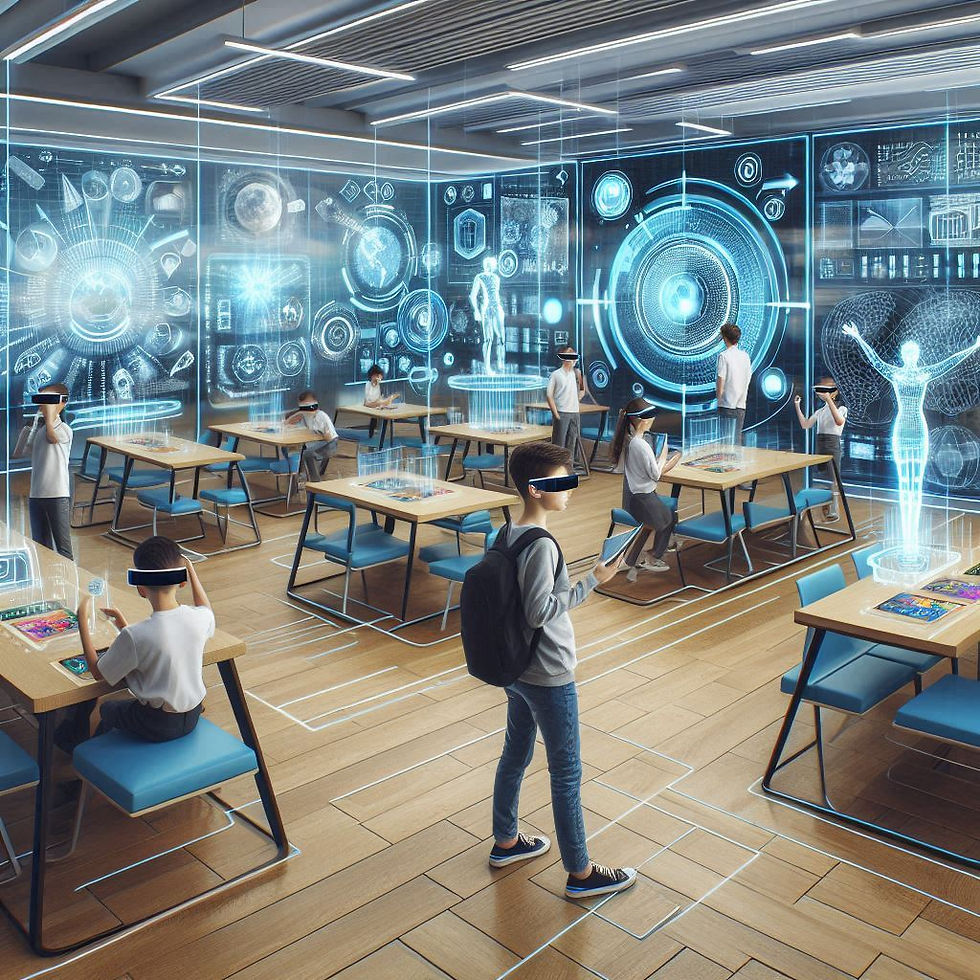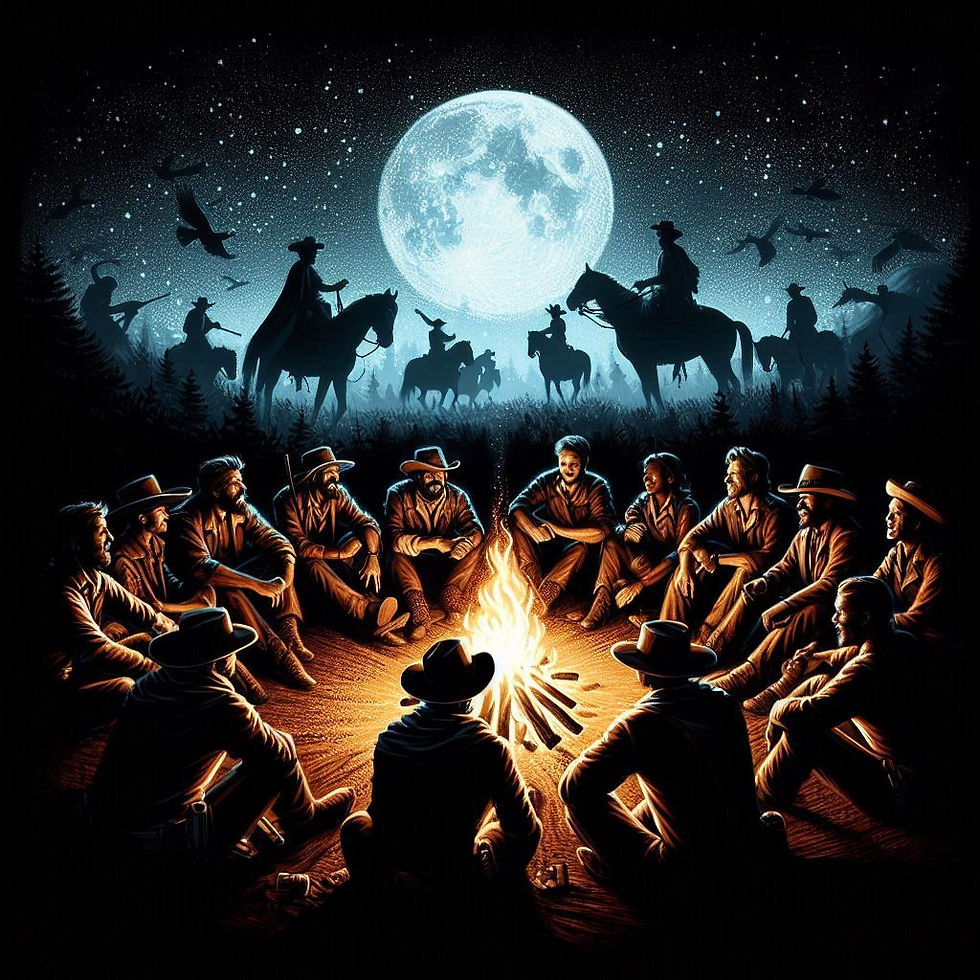Unveiling the Uncharted Territory of AI and Human Creativity: A Professional Exploration
- Franco Arteseros
- Apr 15
- 4 min read

In recent years, the landscape of creativity has shifted dramatically with the rise of artificial intelligence (AI). This intersection of AI and human creativity sparks important discussions about the future of artistic expression and innovation. With advancements in machine learning and natural language processing, AI is not just a tool but is increasingly regarded as a collaborative partner in the creative process.
As we explore this new territory, it's crucial to understand how AI affects human creativity and what implications this holds for artists, writers, designers, and thinkers in various fields.
The Rise of AI in Creative Processes
AI technologies are making inroads into traditional creative industries, including music, visual arts, literature, and marketing. For instance, AI systems like OpenAI's MuseNet can create music in various genres by analyzing extensive datasets from famous composers. Similarly, tools like DALL-E can generate digital artwork based on textual prompts, showcasing AI's evolving capabilities.
This evolution raises significant questions about authorship and originality. If an AI creates a piece of music or a visual artwork, who holds the rights? Is it the programmer of the AI, the creators of the training data, or the AI itself? These questions challenge traditional concepts of copyright and prompt us to reconsider our definitions of creativity.

As AI advances, creators gain access to innovative tools that can assist in generating ideas, manipulating images, or even composing melodies. Such tools enable new forms of collaboration between humans and AI, broadening the scope of creative possibilities. Research by Adobe shows that 74% of creative professionals believe that AI will enhance their creative process rather than replace it.
The Benefits of AI-Assisted Creativity
AI-assisted creativity presents numerous advantages that can enrich the creative process. A direct benefit is increased efficiency. For example, artists can use AI to automate repetitive tasks, freeing them to concentrate on more intricate elements of their work. Writers can utilize AI to generate outlines or suggest plot points, providing a valuable starting point for their narratives.
Moreover, AI can expose creators to unexpected styles and themes. By leveraging platforms like RunwayML, artists can experiment with new techniques that they may not have considered otherwise. This fresh exposure can lead to innovative creations that blend traditional methods with cutting-edge technologies.
Collaboration with AI also democratizes creativity. Individuals without formal artistic training can explore their creative ideas using AI tools, making artistic expression more accessible. For example, a recent survey found that 56% of non-artists use AI-driven graphic design tools to create logos or visuals for personal projects.

However, the rise of AI also raises concerns about the potential dilution of human creativity. Many argue that while machines can generate art, they lack the emotional insights and cultural nuances that define true creativity.
Ethical Considerations in AI-Driven Creativity
The merging of AI with creativity introduces several ethical issues. One major concern is the potential for AI to reinforce existing biases found in its training data. For example, an AI trained on predominantly Western art may lack diversity in its output, potentially perpetuating stereotypes in creative works.
Additionally, there is worry about the displacement of human artists and the undervaluation of traditional creative skills. As AI-generated works become more accepted, there may be a trend towards underappreciating human artistry, which could limit opportunities for artists. In fact, a study revealed that 65% of artists fear losing work to AI technologies.
To address these challenges, it is critical to establish ethical guidelines for integrating AI into creative practices. Collaboration among creators, technologists, and ethicists is essential to develop frameworks that respect human creativity while harnessing the benefits of AI.

Future Possibilities at the Intersection of AI and Human Creativity
Looking ahead, the future of AI in creative fields is both thrilling and uncertain. As technology advances, new opportunities will arise. AI may facilitate collaborative projects, leading to creative partnerships where human intuition aligns with machine capabilities.
Further, AI tools are expected to become more user-friendly, allowing creatives from diverse backgrounds to incorporate these technologies without needing extensive technical expertise. This accessibility could lead to a resurgence in creativity, where emerging artists combine human artistry with machine-generated insights to produce unique works.
The potential for AI to enhance storytelling is particularly exciting. Picture interactive narratives that adapt based on audience engagement or personalized music compositions tailored to individual tastes. The possibilities are vast as we explore the blend of these two realms.
A New Era of Creativity
As we navigate the evolving landscape of AI and human creativity, it is clear that both can mutually benefit from their interaction. While AI presents exciting tools and inspiration, it is vital to uphold our commitment to human artistry and integrity.

The challenges that come with incorporating AI into creative practices should not deter us; rather, they should motivate us to explore what it truly means to create. By combining human intuition with machine learning, we can develop new paths that deepen our understanding of creativity itself.
As we embark on this journey, a balanced approach that values both AI innovations and human creativity will ensure that the arts not only survive but thrive in the era of artificial intelligence. Let us embrace this evolution, continue to create, collaborate, and uplift each other's work as we navigate this fascinating intersection.
FRANCO ARTESEROS...








Comments